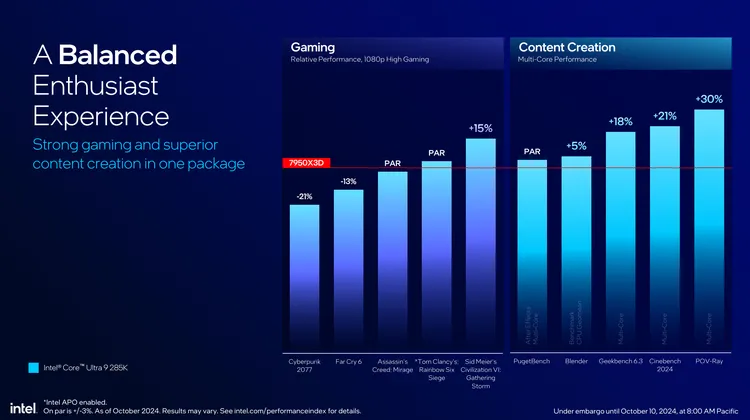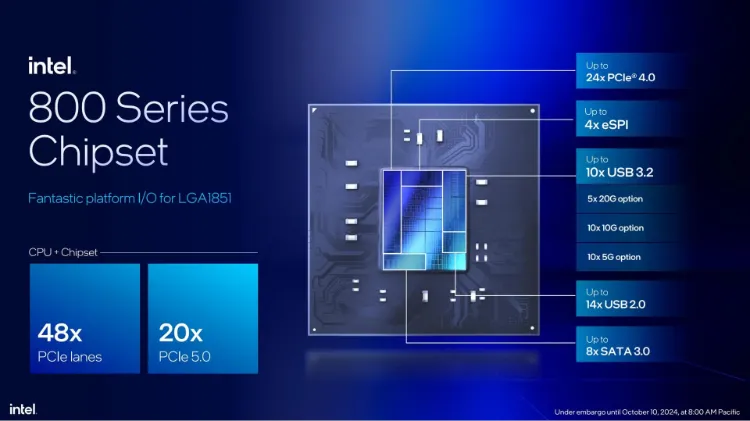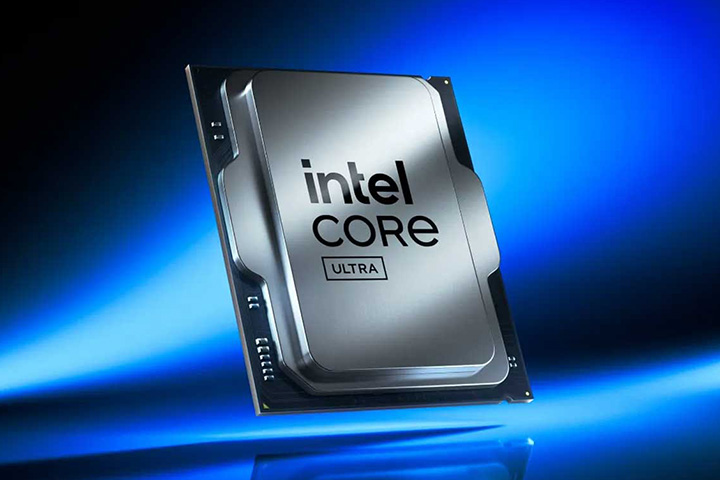Intel has addressed long-standing challenges of temperature and high power consumption in its processors by introducing the new Core Ultra 200S desktop series, set to launch on October 24. Codenamed Arrow Lake S, this new series focuses on performance per watt, promising cooler and more efficient operation compared to Intel’s 14th-generation processors. Arrow Lake S also marks Intel’s first high-end desktop processors to feature an integrated Neural Processing Unit (NPU) for accelerating AI tasks.
Optimized Performance with Lower Power Consumption
Josh Newman, Intel’s General Manager and Vice President of Product Marketing, said, “Arrow Lake will offer Intel’s best performance for desktop and laptop enthusiasts.”

Arrow Lake’s architecture stems from Intel’s extensive efforts to reduce power consumption in its chips. The 13th and 14th generation Intel Core processors had high power consumption, often significantly more than AMD’s competing chips. The new Core Ultra 200S chips cut desktop power consumption in half during typical tasks, and Intel claims they will also consume less power during gaming.
Gaming Performance and Comparison with Competitors
At a press briefing, Intel showcased Assassin’s Creed Mirage running on the flagship Core Ultra 9 285K, compared to the current Core i9-14900K. The Ultra 9 285K delivered similar or better performance with 80 watts less power consumption. Intel also claimed that in games like Call of Duty: Modern Warfare III, F1 24, and Total War: Pharaoh, the processor used up to 58 watts less. In extreme cases, such as Warhammer: Space Marines 2, the Ultra 9 285K ran with 165 watts less power than the 14900K.

Intel further claimed that the Core Ultra 9 285K operates around 13°C cooler than the 14900K during 1080p gaming, using a 360mm integrated cooler. While the new processors are transitioning to Intel’s new LGA-1851 socket, existing integrated coolers should still work. You may need to check if additional brackets are required, though Corsair has confirmed that all of its coolers supporting LGA-1700 will also support LGA-1851.
Architecture and Specifications of Intel’s Core Ultra 200S Processors
Intel is utilizing its latest 3D packaging technology to build the Core Ultra 200S series, reducing the packaging size by 33% compared to 14th-generation chips. As a result, interesting changes have been introduced. The flagship Ultra 9 285K comes with 24 cores, 24 threads, and a boost frequency of 5.7 GHz. This boost clock is lower, and there are eight fewer threads compared to the previous 14900K, as Intel has opted to drop Hyper-Threading in favor of energy efficiency.
The Ultra 9 285K will feature eight performance cores (P-cores) and sixteen efficient cores (E-cores). The E-cores have been upgraded to process instructions more efficiently, with even reduced latency. There will be 36MB of shared L3 cache, 3MB of L2 cache for each P-core (compared to 2MB in the 14th generation), and 4MB of L2 cache for each E-core. Intel claims that the Ultra 9 285K will be about 8% faster in single-threaded tasks and around 15% faster in multi-threaded workloads compared to the 14900K.
AI and Neural Processing Unit (NPU)
Intel presented limited benchmarks for the Ultra 9 285K against AMD’s Ryzen 9 9950X and Ryzen 9 7950X3D processors. The new Intel flagship appears to compete with AMD’s Zen 5 desktop processor, but it will likely fall behind AMD’s X3D processors, as indicated by Intel’s own data. Interestingly, Intel has been transparent about trailing behind the current best gaming processor, AMD’s Ryzen 7 7800X3D.

This may be disappointing for gamers, but Intel claims that it will still hold the performance crown for most creative tasks and AI. An NPU has been added to the Ultra 9 285K, capable of accelerating specific AI tasks. However, this NPU only delivers 13 TOPS, meaning these processors won’t qualify for Microsoft Copilot Plus features, which require 40 TOPS or more. Intel hopes that, with the growing adoption of NPUs, developers will leverage this capability to offload tasks and potentially use it for gaming-related features.
Motherboard and Additional Specifications
A new LGA-1851 socket means new motherboards. You’ll need a new Z890 motherboard to use Intel’s Core Ultra 200S desktop processors. Intel’s 800-series chipset supports up to 24 PCIe 4.0 lanes, up to 8x SATA 3.0, and up to 32 USB 3.2 ports. The platform supports a total of 48 PCIe lanes, with up to 20 being Gen 5 from the CPU. It also integrates Wi-Fi 6E, 1GbE, Bluetooth 5.3, and 2x Thunderbolt 4 on the CPU, while motherboard manufacturers can add separate options for Wi-Fi 7, up to 4x Thunderbolt 5 ports, 2.5GbE, and Bluetooth 5.4.

Intel is also enhancing memory support with the Core Ultra 200S series and Z890 motherboards, supporting DDR5-6400, with a maximum of 48GB per DIMM and a total capacity of 192GB. Support for DDR4 has been dropped from the 800-series chipset. These chips are also compatible with Secure Core and include three integrated hardware engines for security.
Price and Release Date of Intel’s Core Ultra 200S Processors
Intel’s Core Ultra 200S processors will be available in late October. The Intel Core Ultra 9 285K is priced at $589, while the Core Ultra 7 265K and Core Ultra 5 245K are priced at $394 and $309, respectively. The Ultra 7 265KF and Ultra 5 245KF, which lack integrated graphics, will be available for $379 and $294, respectively.
Source: The Verge
